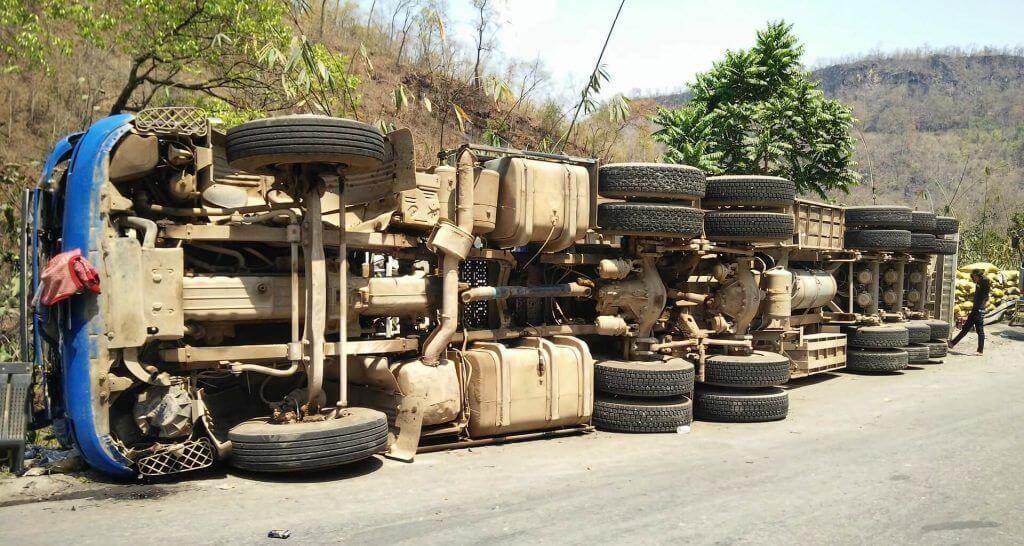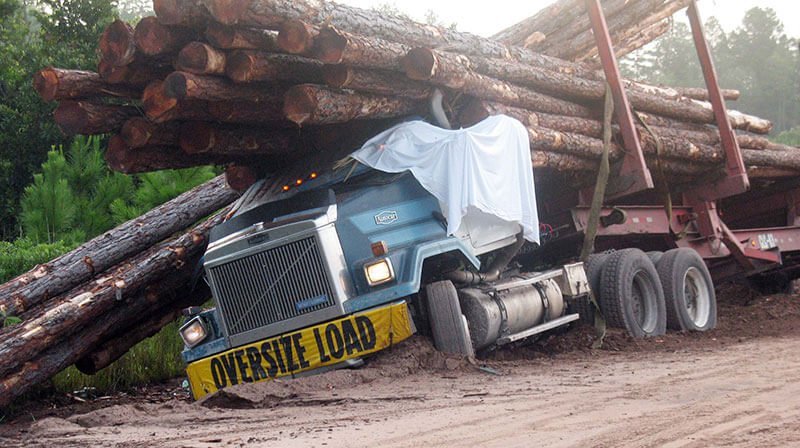
History tells the tale of the danger of logging. During the middle ages, for every 1,000 workers who went into the forest, only 500 returned. While logging continues to be dangerous, it’s not as dangerous as it used to be! However, according to the Centers for Disease Control and Prevention, (CDC), the logging industry has a fatality rate 21 times higher than the overall fatality rate for work injuries. Northern California and California’s Central Valley are regions where logging accident injuries and fatalities regularly occur.
The nature of logging injuries and fatalities vary widely. Some commonly seen injuries and fatalities result from the following:
- Equipment Rollovers
- Inadequate Equipment Operator Training
- Failure to Maintain and Inspect Equipment
- Logging Truck Accidents
Logging Equipment Accidents

Equipment Rollovers
Rollovers of logging equipment cause many injuries and fatalities in the logging industry. Equipment rollovers can be attributable to some of the below factors:
- A worker’s failure to assess the task at hand
- Changes to the work area, including soil conditions which may change from day to day
- A worker’s failure to understand the limits of the machine’s abilities
- Lack of proper training.
Log Skidder Accidents
A log skidder accident, because of a failure to appreciate the above factors, frequently leads to injury or death. Logging equipment accidents can also occur when either equipment operators or workers on the ground fail to appreciate the location of the other. With many moving parts, machinery causes injury and death to workers unaware of, and in the path of, these moving parts. A failure to appreciate the location of power lines can also lead to worker fatalities and deaths.
Chainsaw Accidents
The lower left leg and the left arm sustain most, but not all, injuries in chainsaw accidents. Chainsaw accidents also injure the head, upper body, arms, and feet, according to the Occupational Safety & Health Administration (OSHA). OSHA requirements for using a chainsaw include maintaining secure footing while operating a chainsaw. Chainsaws should not be used directly overhead. Finally, users should turn off chainsaws, or engage the chain brake, when the saw is carried on hazardous terrain.
Logging Truck Accidents

Logging truck accidents can also cause injuries and death in two ways. First, logs when improperly loaded can shift and crush the driver and passengers in the truck cab. Similarly, failure to properly load logs can result in logs falling off the truck bed. This leads to blocked roads, injured occupants of other vehicles on the road, and subsequent accidents, as more vehicles arrive on the scene.
In addition, truck accidents occur when the failure is due to faulty equipment. A failure to regularly inspect equipment is a recipe for disaster. Equipment must not only be inspected but also properly maintained to ensure worker safety, as well as the safety of others.
Other Types of Logging Accidents
Other situations leading to injury include attempting to cross a bridge before determining whether it can hold the weight of the equipment. Shovel accidents can occur when workers fail to communicate. Both workers and operators must understand the intentions and location of the other. Falling logs, due to equipment failures such as cable failure, also contribute to injuries and deaths of loggers. Additionally, limbs hidden by live branches, and broken tops of trees, once dislodged cause fatalities to loggers. Another source of injury or death involves co-workers felling trees a distance away. Where the tree falls in an unexpected direction, or the workers felling the tree are unaware of the location of their coworker, injury or death can result.
Do I Need an Attorney for My Workers’ Compensation Claim?
Some people argue that you don’t need an attorney for a workers’ compensation claim. However, in California, understanding the law is key to understanding and identifying sources of recovery for your injuries. Under workers’ compensation claims, you are entitled to recover medical expenses for your injury and temporary disability, which is compensation for part of your lost income while you recover. Workers’ compensation does not cover future wage loss, pain, and suffering, or other things you may need to make yourself whole again. In certain cases, injured employees have an opportunity to file a “third party action,” which is a suit against a third party who may be wholly or partially responsible for the injury. Third-party actions, where available, offer an extra avenue for recovery for an injured worker.
If you or a loved one has been injured due to a logging accident, immediately call Nadrich Accident Injury Lawyers to learn about your legal rights and options. Speak to an experienced logging injury lawyer before you sign anything. Depending on the circumstances, the value of a Workers’ Compensation claim can be diminished in the days following the accident, if the best protocol for financial recovery is not followed.
Call 1-800-718-4658 now for a free and confidential consultation with one of our logging accident specialists. We have offices throughout California including Northern California, the Central Valley and beyond.

